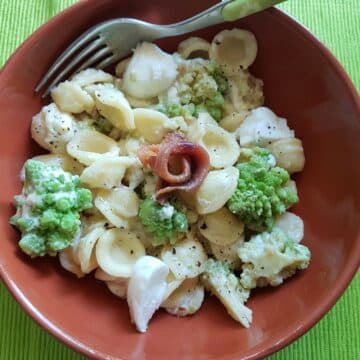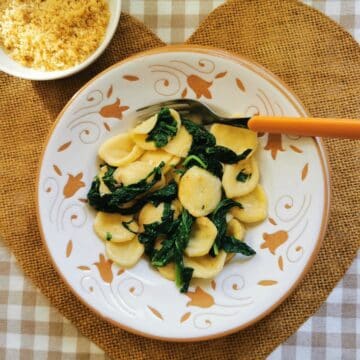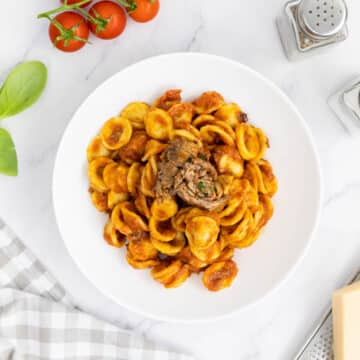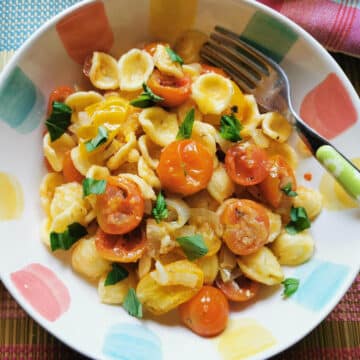Italians have been making and eating orecchiette for almost 700 years. Interestingly, the way this pasta is made has changed very little in all that time! I just love food with history, don't you?
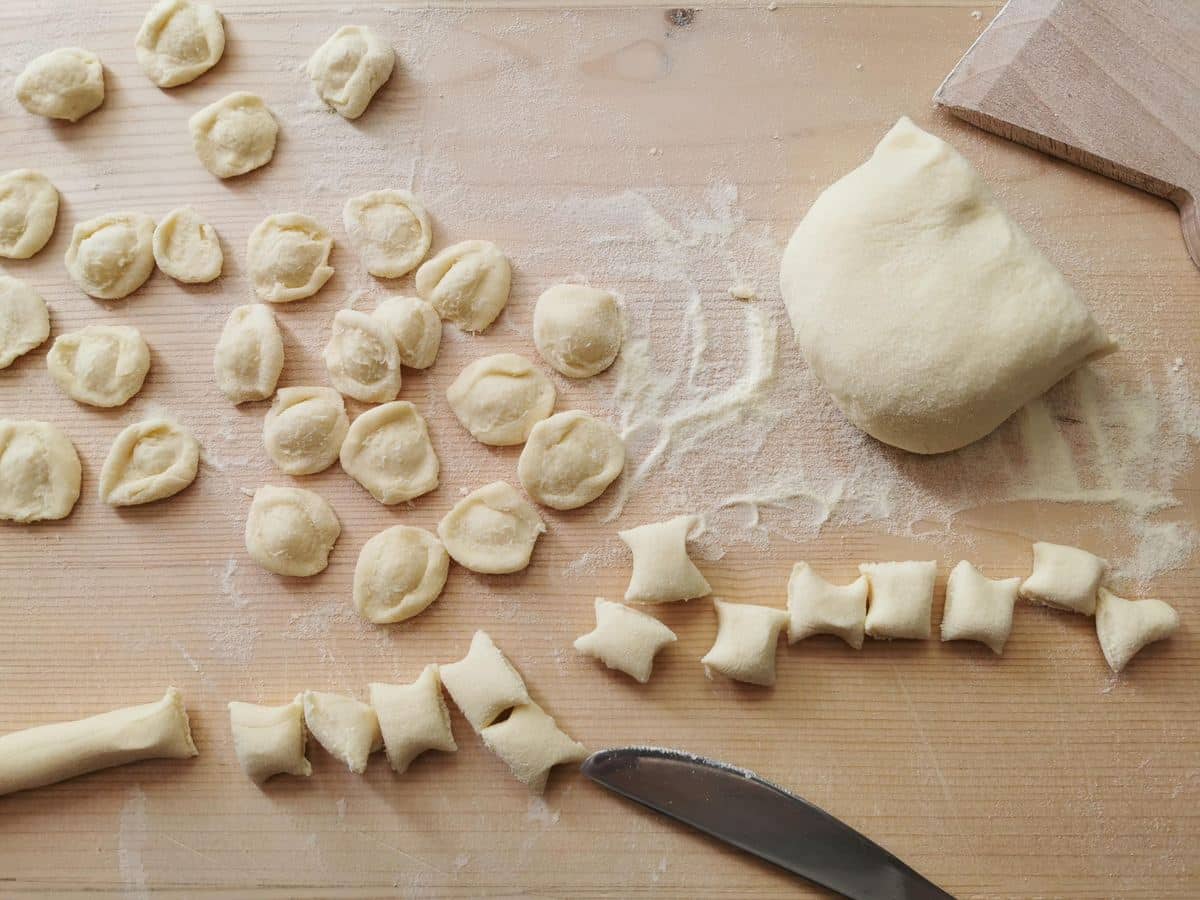
What is Orecchiette?
Orecchiette is a type of pasta that has a unique ear-like shape, which makes it perfect for holding sauces and ingredients. This pasta has a varied texture, with a thinner center and thicker edges. This gives it a delightful chewiness that sets it apart from other types of pasta.
History
Orecchiette pasta is traditionally from Puglia and neighboring Basilicata and is very popular throughout Italy today. The word ‘orecchiette’ means ‘little ears’, where the name derives from the shape.
Orecchiette is said to have become popular in Puglia between the 12th and 13th centuries. So, this is definitely a pasta of ancient origin.
However, some food historians say that originally, this pasta arrived in Southern Italy from Provence during the 13th century with the Angevins, who brought a form of pasta with them called ‘crosets’ similar to the orecchiette of today.
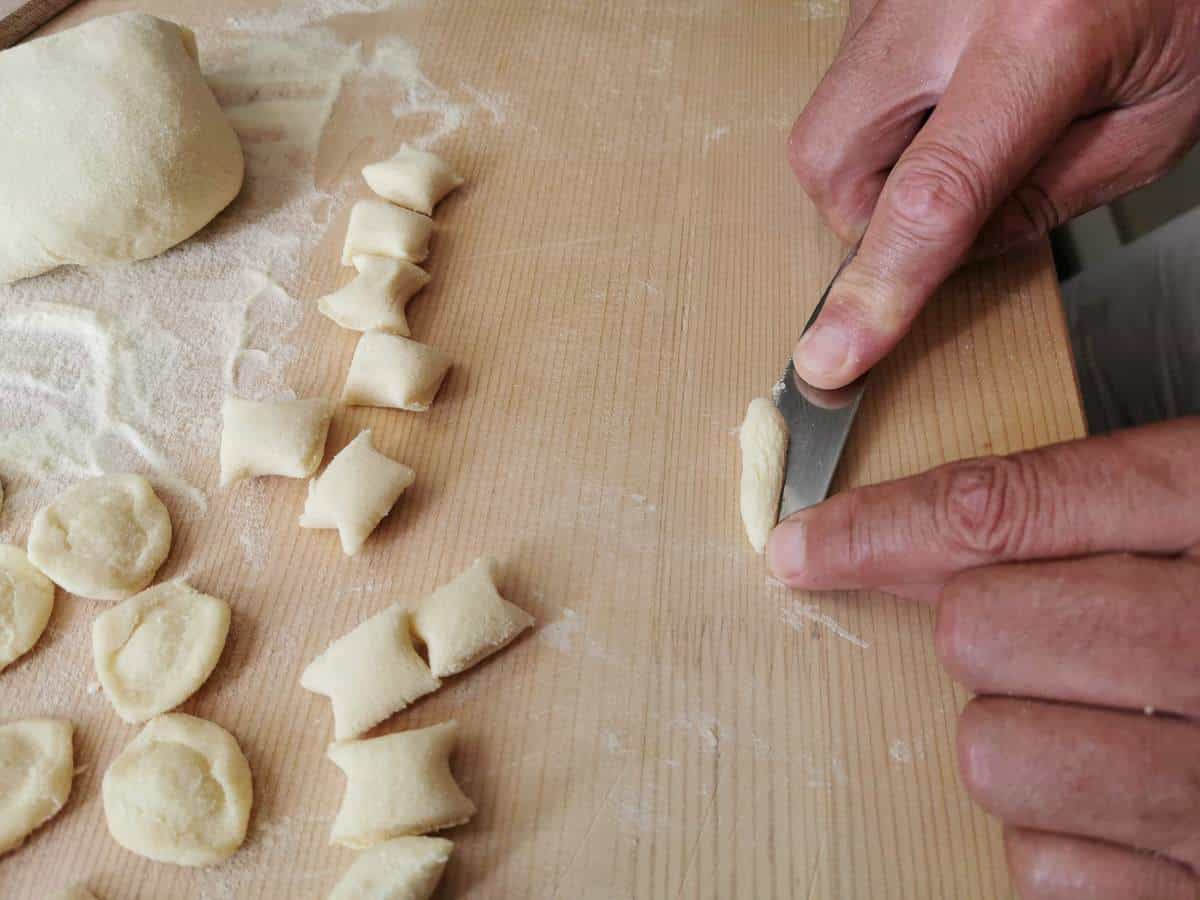
Ingredients
In Puglia and Basilicata, orecchiette is typically made by hand. However, fresh orecchiette can be purchased throughout Italy. While a dry version exists, making this pasta from scratch or purchasing it fresh is the best option.
Since this is a very old and traditional pasta, it is made using simple ingredients. Traditional homemade orecchiette only uses a mix of flour and water with some people adding a pinch of salt for flavor.
To make a batch of this pasta from scratch for 4-6 people, you only need 400g of durum wheat semolina flour (known as 'semola' in Italian) and 100ml of warm water.
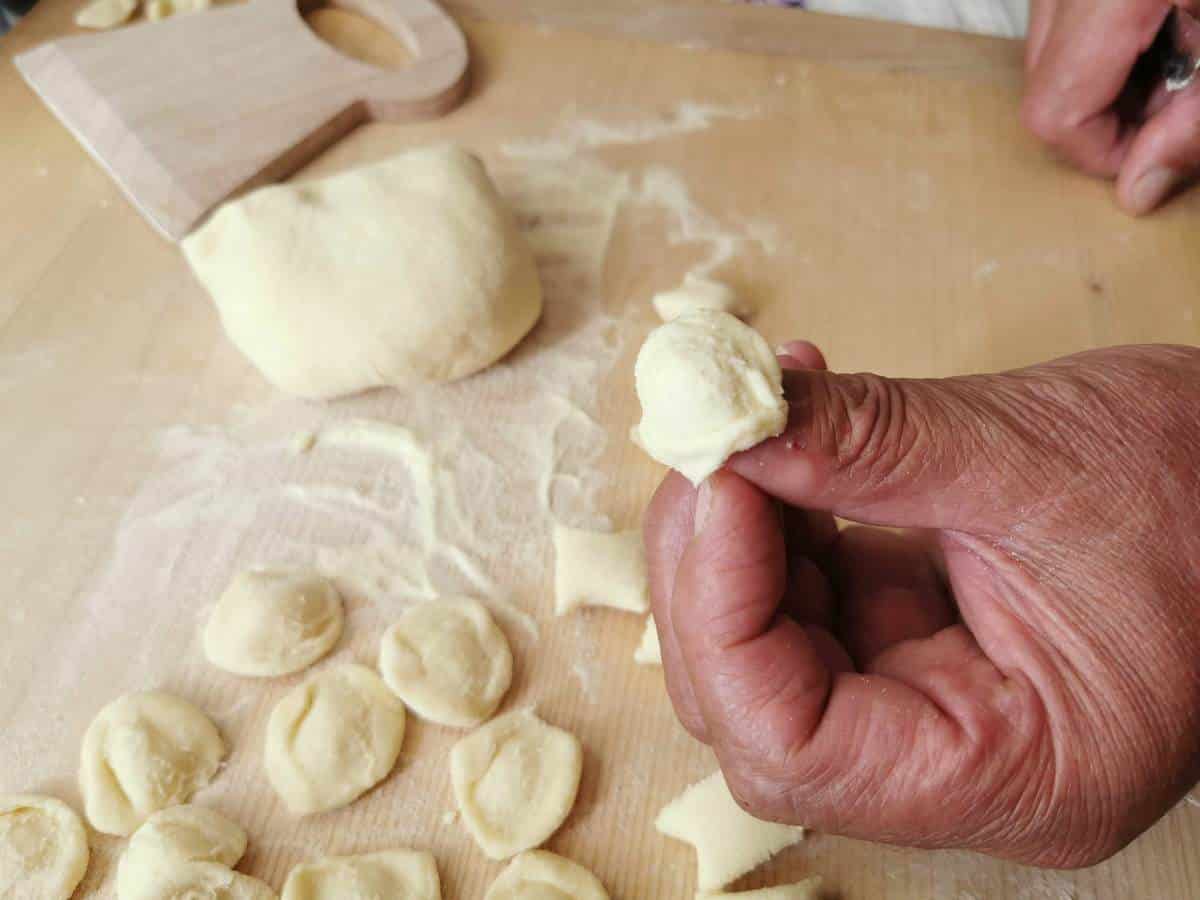
Preparation
To make homemade orecchiette, start by mixing warm water into the flour until you get a firm dough. Knead the dough thoroughly for about 5-10 minutes, which will help to develop the gluten and give the pasta its structure and strength.
Once the dough reaches a consistent, elastic quality, you roll it into finger-thick ‘snakes’ or ropes. Then, using a knife, you cut a piece the size of a thumbnail and flatten it out across the work surface with a knife (the cutting and spreading should be one motion).
After that, turn the pasta pieces inside out using your thumb. This will make the center of the bit of pasta form up into a dome or "little ear"!
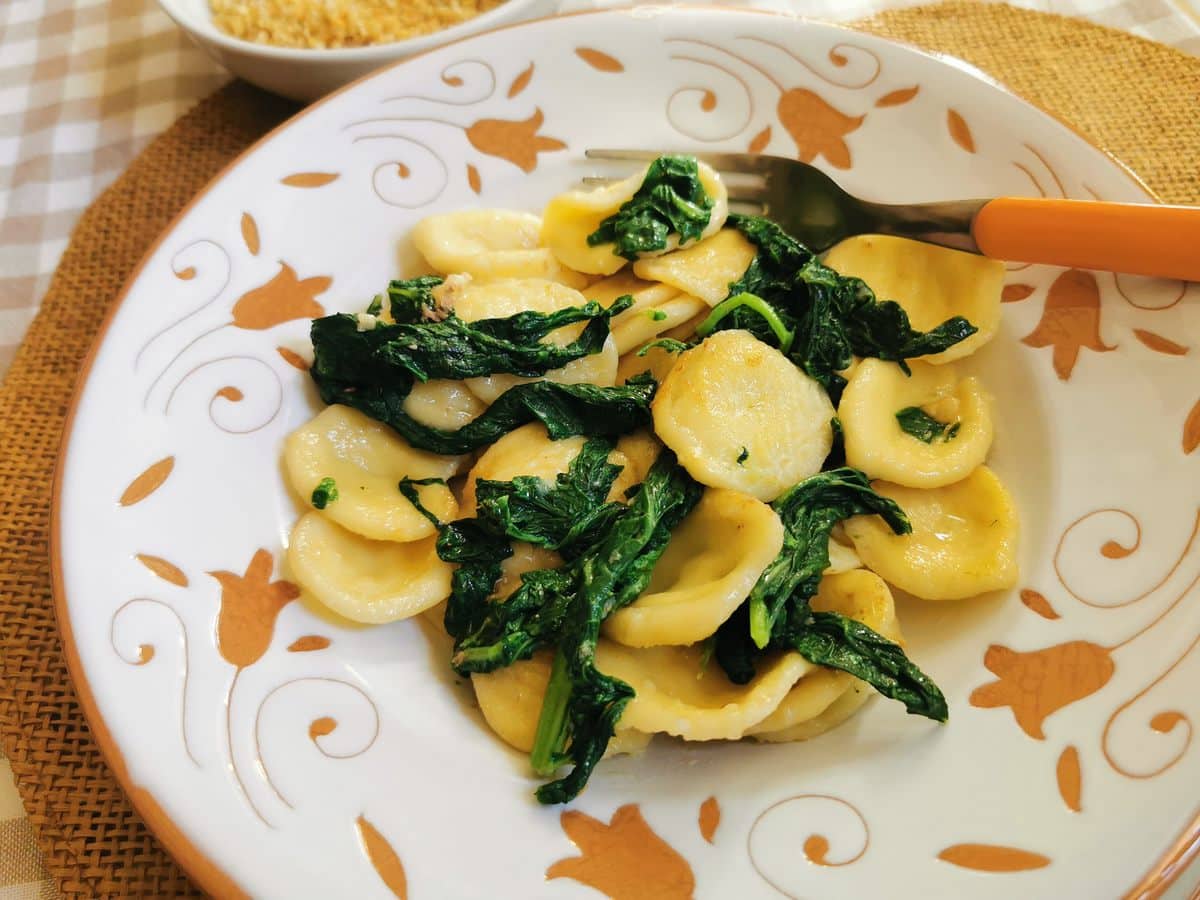
Cooking Tips
To cook fresh orecchiette:
- Start by boiling the pasta in salted water.
- Keep an eye on the pot and wait for the pasta pieces to rise to the surface, which indicates that it is almost done.
- Let the pasta cook for an additional two minutes to ensure they reach the perfect 'al dente' texture.
- Before draining the pasta, taste the orecchiette to make sure that it is fully cooked to your liking.
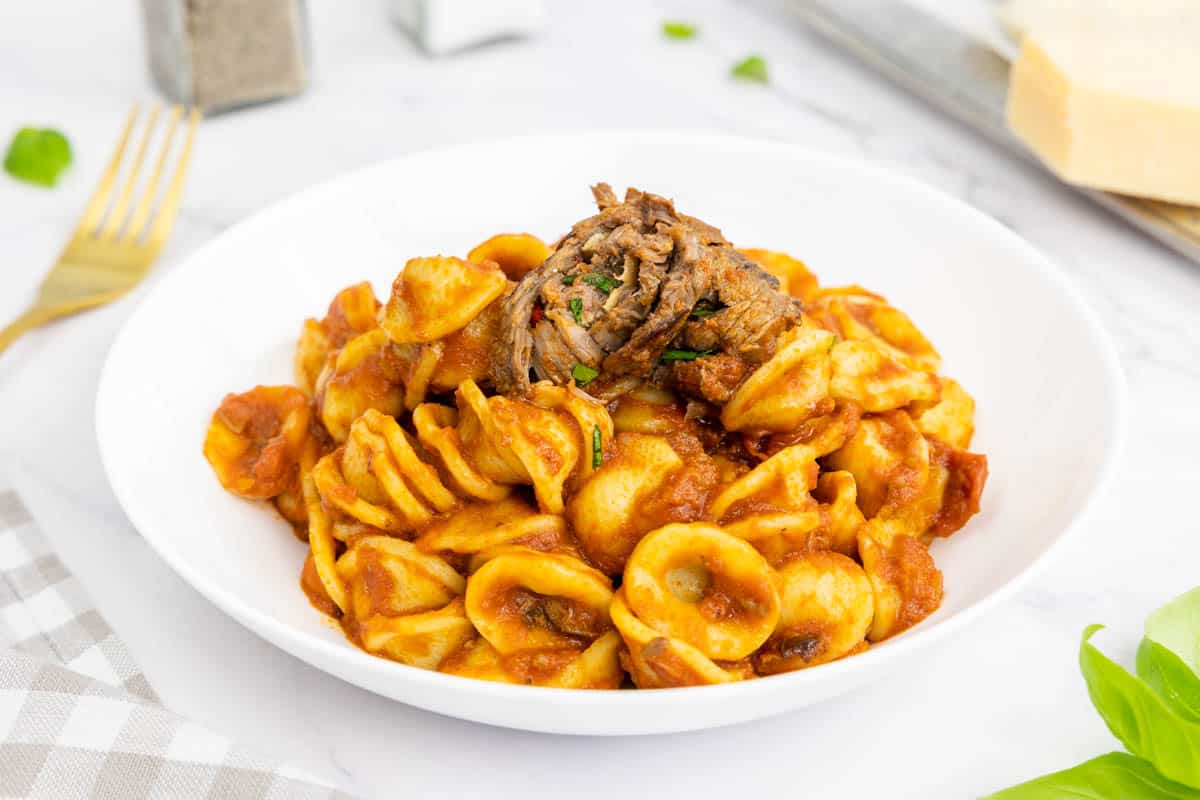
Serving Suggestions
In Puglia, orecchiette is traditionally cooked with broccoli rabe (rapini) known as ‘cima di rapa’ in Italian. This slightly bitter leafy vegetable is very popular in Italy, particularly in the regions of Lazio, Puglia, and Campania, where it is grown.
However, due to its excellent ability to catch ingredients, it pairs well with a wide range of sauces and ingredients. Some traditional recipes include:
- Orecchiette Pasta with Romanesco Broccoli
- Roasted Cherry Tomato Orecchiette Pasta
- Orecchiette with Nduja and Eggplant (Aubergine)
- Orecchiette with Meatballs
- Baked Orecchiette with Lamb
- Orecchiette with Braciole
Storage Tips
After making homemade orecchiette, place the pasta on a baking sheet sprinkled with semolina flour to prevent them from sticking. They can then be covered and can be refrigerated for up to 2 days. For longer storage, freeze the pasta on a tray before transferring it to a freezer bag and use it within 3 months.
On the other hand, dried orecchiette should be stored in a cool, dry place. You can keep it in an airtight container or sealed in its packaging. Dried pasta generally has a long shelf life, with the specific expiration date indicated on the packaging.
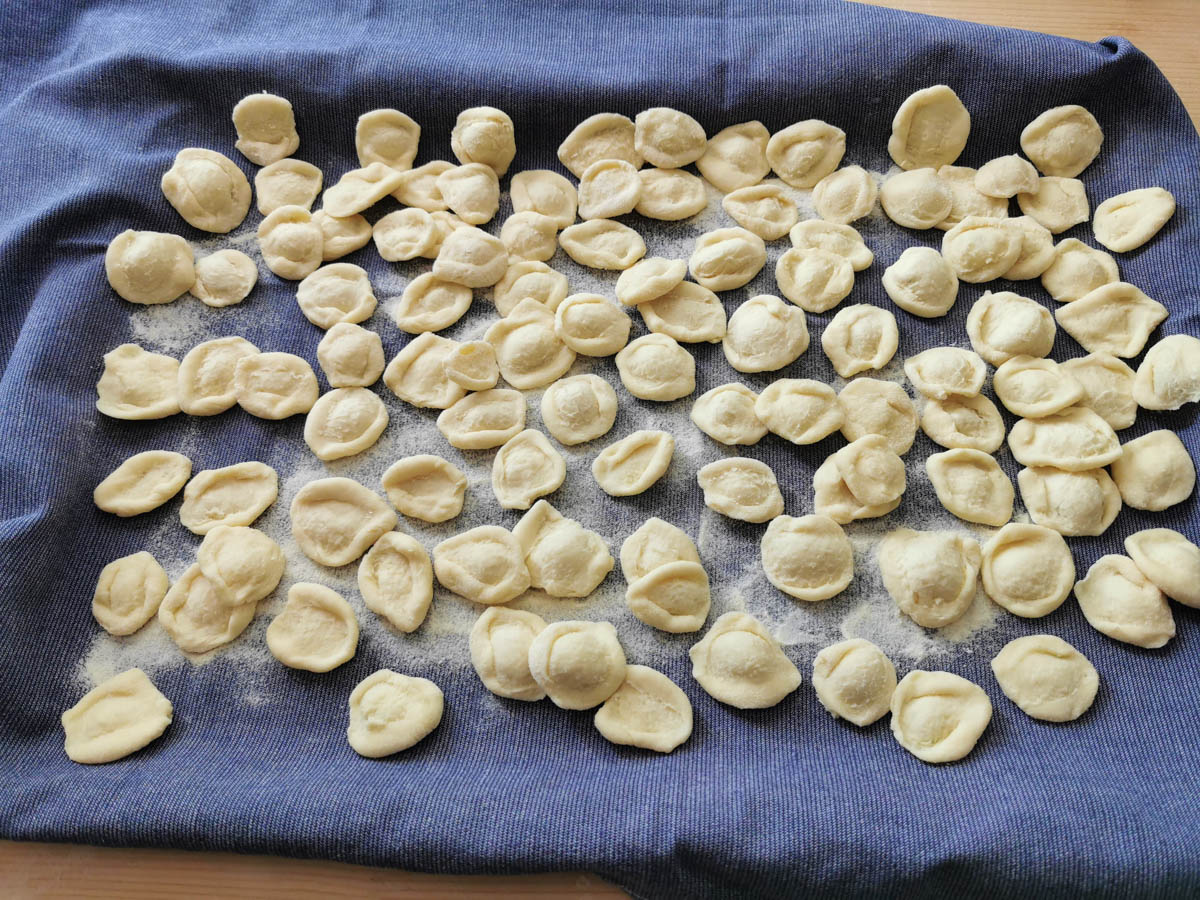
FAQs
Orecchiette translates to "little ears" in Italian, a name that reflects its small, ear-like shape.
Orecchiette is usually slightly less than an inch (2.5 cm) in diameter and has a slightly domed shape with a rough surface. The size of this pasta can vary depending on what it is served with; larger ones are commonly paired with vegetables, while smaller ones are preferred for meat sauces or tomato sauces with tiny meatballs.
Ensure the water is at a rolling boil before adding the pasta, as this helps the pasta move around the water while cooking. After adding the pasta, stir it at intervals, especially during the few minutes of cooking.
Orecchiette's unique shape and texture make it ideal for catching a variety of sauces. Traditional pairings include thicker, chunkier sauces that include vegetables like broccoli rabe (rapini) or different types of meat.
Traditional orecchiette is suitable for vegans, as it is typically made from durum wheat semolina flour and water, without any animal products. However, it's always important to check the packaging of store-bought orecchiette, as some manufacturers may include eggs.
Conclusion
Orecchiette is a type of pasta that has been around since the 13th century and is used in many traditional dishes. Its unique shape resembles an ear and provides a delightful texture that is perfect for catching a variety of sauces, making it a popular choice among pasta lovers.
Making this pasta from scratch is easy and requires only a few simple ingredients. You don't need any special equipment, so it's an excellent choice for home cooks who want to make pasta at home.
Whether you're looking to recreate traditional Italian recipes or invent new ones, orecchiette makes a versatile base that pairs well with both meat and vegetables.
Pin for Later:
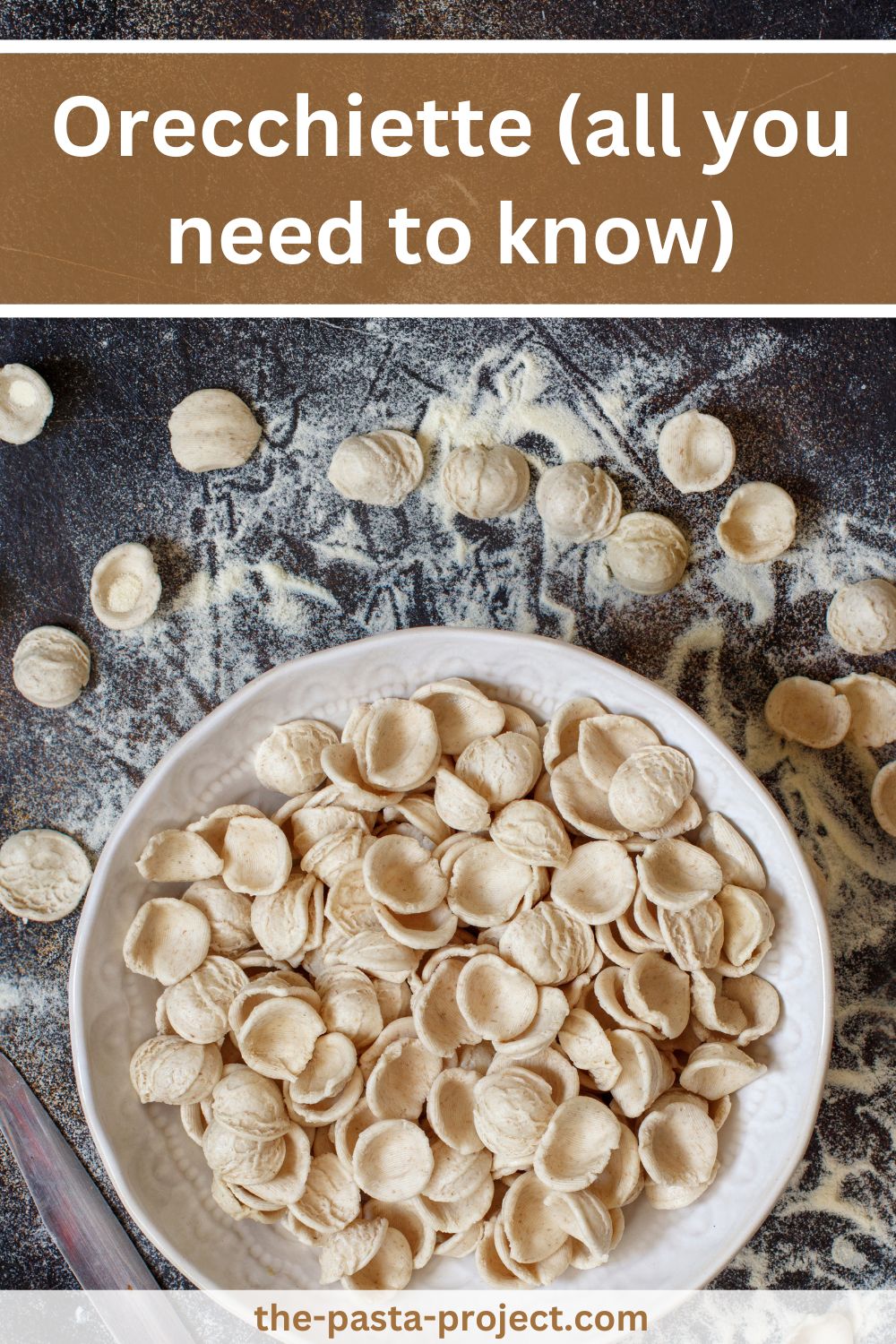
If you are interested in learning how to make homemade pasta and different types of gnocchi, check out my shop page for some great video online courses from my friends in Rome! Nothing beats learning to make pasta from Italians! Plus, while you’re there, why not order a copy of one of my pasta recipe cookbooks or check out some recommended pasta-making tools?
If you found this article interesting or helpful, please let me know in a comment here on the blog or on The Pasta Project Facebook page.
Looking forward to hearing from you.


